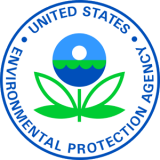City of Oskaloosa, Iowa, Selected for $300,000 EPA Brownfields Grant to Address Contaminated Properties
Environmental News
FOR IMMEDIATE RELEASE

The city will use its $300,000 assessment grant to conduct 16 Phase I and eight Phase II environmental site assessments. Grant funds also will be used to conduct reuse planning activities, including the preparation of a market study for priority Brownfield sites, and to conduct community involvement activities.
Oskaloosa is one of 149 communities nationwide selected to receive 151 grant awards totaling nearly $65 million in EPA Brownfields funding through the MAC Grant program. Forty percent of the communities selected for funding will receive assistance for the first time.
“These grants fulfill several of President Trump’s top priorities simultaneously: helping communities in need transform contaminated sites into community assets that not only create jobs and jumpstart economic development but also improve public health and the environment,” said EPA Administrator Andrew Wheeler. “We are targeting these funds to areas that need them the most. Approximately 40% of the selected recipients are receiving Brownfields grants for the first time, which means we are reaching areas that previously may have been neglected, and 108 of the selected communities have identified sites or targeted areas for redevelopment that fall within Opportunity Zones.”
“We applaud the city of Oskaloosa for their success and commitment to Brownfields redevelopment,” said EPA Region 7 Administrator Jim Gulliford. “Through their efforts, we look forward to a number of positive impacts for the city, including a cleaner environment, new jobs, and economic investment for the community.”
“The city of Oskaloosa plans to use the assessment grant to promote investment in existing neighborhoods, encourage cleanup, and reuse contaminated property,” said Oskaloosa Public Works Director Akhilesh Pal, PE. “The assessment grant funds will also help the city of Oskaloosa with improving the environment and revitalizing the local economy. Redevelopment planning activities will focus on evaluating the condition and needs of infrastructure serving the targeted sites, with emphasis placed on storm sewers.”
Grants awarded by EPA’s Brownfields program provide communities across the country with an opportunity to transform contaminated sites into community assets that attract jobs and achieve broader economic development outcomes, while taking advantage of existing infrastructure. For example, Brownfields grants have been shown to:
- Increase Local Tax Revenue: A study of 48 Brownfields sites found that an estimated $29 million to $97 million in additional local tax revenue was generated in a single year after cleanup. This is two to seven times more than the $12.4 million EPA contributed to the cleanup of these sites.
- Increase Residential Property Values: Another study found that property values of homes near revitalized Brownfields sites increased between 5% and 15% following cleanup.
One hundred and eight communities selected for grants this year have identified sites or targeted areas in census tracts designated as federal Opportunity Zones. An Opportunity Zone is an economically-distressed community where new investment, under certain conditions, may be eligible for preferential tax treatment.
“I am truly excited to join as EPA Administrator Andrew Wheeler announces over $64 million in Brownfield funding,” said Scott Turner, executive director of the White House Opportunity and Revitalization Council. “The Brownfields grant program is a tremendous vehicle for bringing real revitalization and transformation to the distressed communities of America. As the executive director of the White House Opportunity and Revitalization Council, I am pleased that EPA continues to support the Council and the president’s work in this area. In fact, of the 149 communities selected for these grants, 108 will benefit communities with Opportunity Zones. I look forward to seeing the impact that these grants will have on neighborhoods and citizens across the country.”
Background
A Brownfield site is a property for which the expansion, redevelopment or reuse may be complicated by the presence or potential presence of a hazardous substance, pollutant or contaminant. There are estimated to be more than 450,000 Brownfields in the U.S. As of May 2019, under the EPA Brownfields program, 30,153 properties have been assessed and 86,131 acres of idle land have been made ready for productive use. In addition, communities have been able to use Brownfields grants to leverage 150,120 jobs and more than $28 billion of public and private funding.
In 2018 Congress reauthorized the statutory authority for the Brownfields program. The reauthorization included changes to the program to expand the list of entities eligible for Brownfields grants, increase the limit of individual Brownfields cleanup grants to $500,000, and add grant authority for multipurpose grants. These important changes will help communities address and cleanup more complex Brownfield sites.
The 2019 National Brownfields Training Conference will be held on December 11-13 in Los Angeles, California. Offered every two years, this conference is the largest gathering of stakeholders focused on cleaning up and reusing formerly utilized commercial and industrial properties. EPA cosponsors this event with the International City/County Management Association.
- List of FY 2019 Applicants Selected for Funding
- Brownfields Success Stories – Brownfields: Properties with New Purpose; Improving Local Economies in Communities with Brownfield Sites
- Learn more about Brownfields Grants
- Learn more about EPA’s Brownfields program
- Learn more about the 2019 Brownfields Conference
# # #
Learn more about EPA Region 7
View all Region 7 news releases
Connect with EPA Region 7 on Facebook: www.facebook.com/eparegion7
Follow us on Twitter: @EPARegion7
